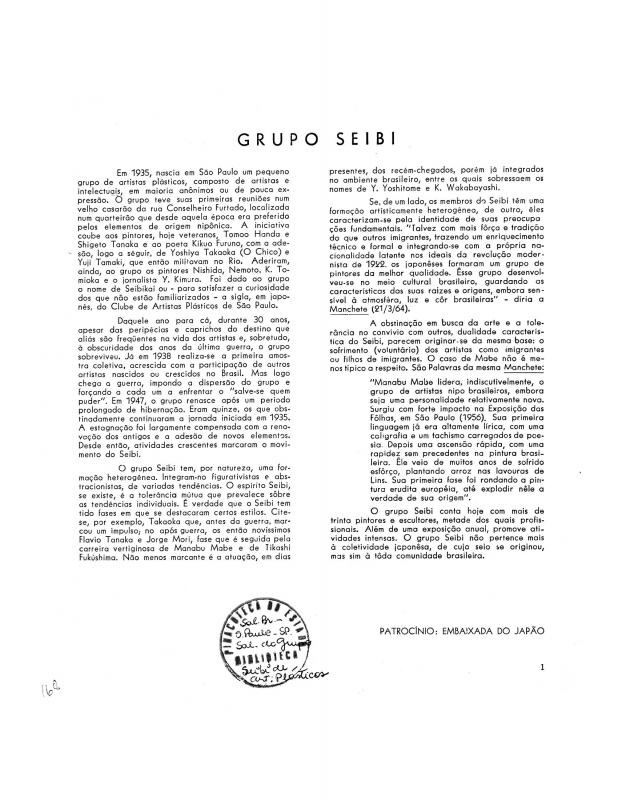This text by the art critic Ibiapaba Martins is one of the rare reports on the Grupo Quinze, a group of Japanese-Brazilian painters in São Paulo in 1947 and 1948. In the 1930s and 1940s, here, and in Rio de Janeiro as well, the scarcity of art schools prompted the formation of art associations where members could discuss the work being produced by young artists, exchange information, and share the costs of the workshop. The same thing happened with other groups, such as the Grupo Santa Helena, the Núcleo Bernardelli, and the Seibi. The members of the Grupo Quinze drew inspiration from Post-Impressionism, and mainly painted suburban landscapes and still lifes. The Grupo Quinze was also known as the Grupo do Jacaré [Alligator Group], which included members of Seibi, Santa Helena, Bernardelli, and Guanabara who were primarily of Japanese descent and Brazilians, such as Geraldo de Barros, who embraced the Constructivist movement via the grupo ruptura in 1952. This document provides insight into the origins of the Grupo Quinze, and a look at the main characteristics of their work.
[As complementary reading, see the following articles in the ICAA digital archive: “Grupo Seibi” (doc. no. 1110646); by Tomoo Handa “1ª Ata Grupo Seibi” (doc. no. 1110650) and with Maria Cecília França Lourenço “Depoimento: Tomoo Handa” (doc. no. 1110643); by Alzira Pecorari et al. “Depoimentos sobre o Grupo Guanabara” (doc. no. 1110644); and as told to Daisy Peccininni “Depoimento de Yoshyia Takaoka ao Centro de Pesquisa de Arte Brasileira Fundação Armando Álvares Penteado” (doc. no. 1110642)].




